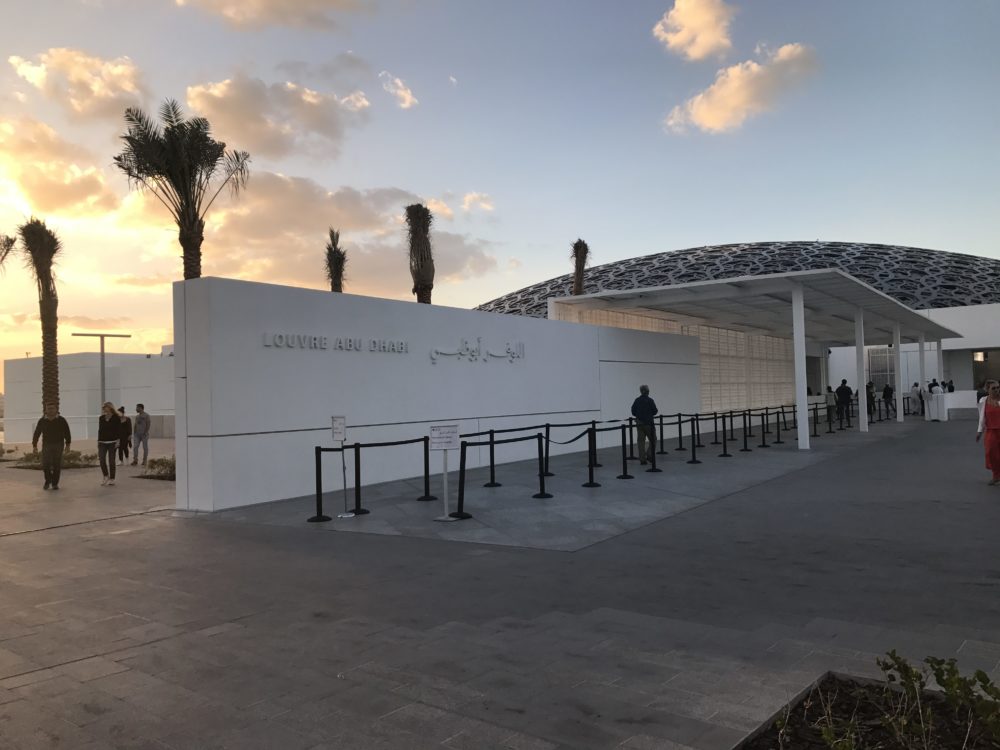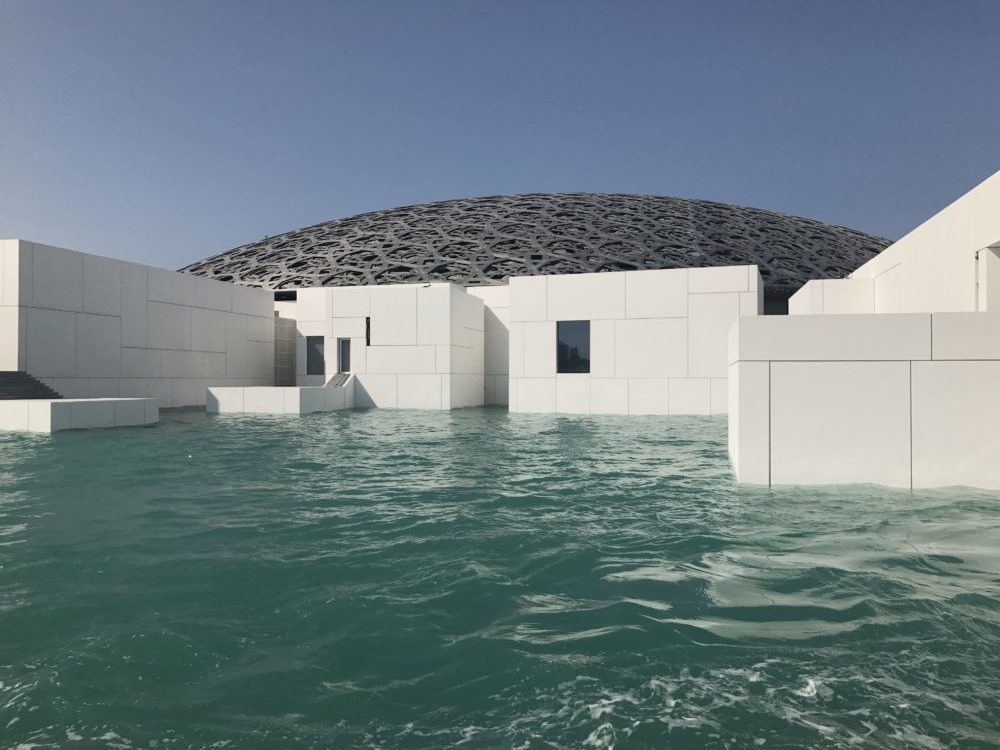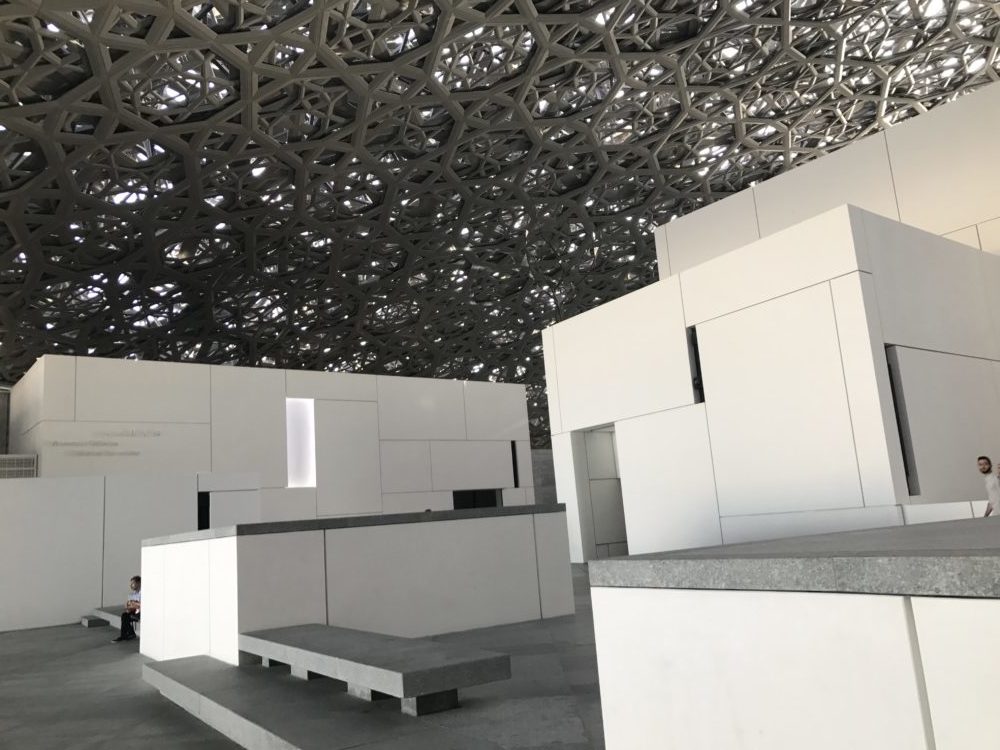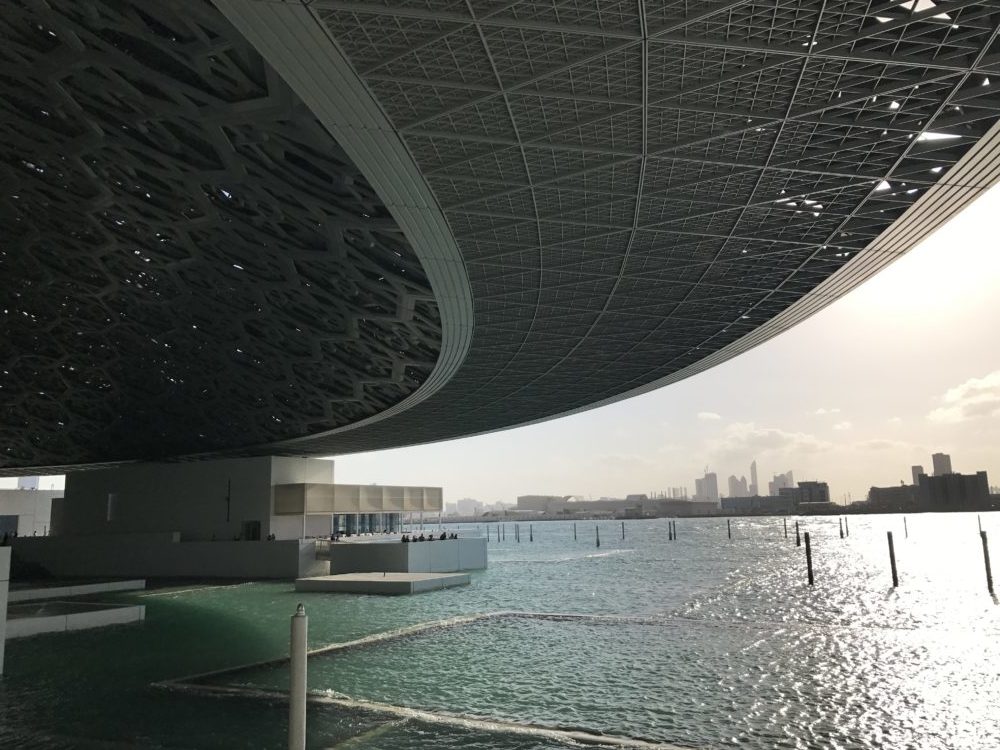
I recently had the opportunity to spend a day in Abu Dhabi, on my way home from Canada. Flying with Etihad, who base themselves out of the U.A.E. Capital City, a stop-over couldn’t be made easier – and is indeed encouraged for visitors to the transit hub. With my bag checked through to Australia, I went through immigration with ease (though expect a couple of extra questions in Customs when you’re rolling out without a suitcase), and in just a few minutes I was in a taxi on my way to Abu Dhabi’s newest attraction: The Louvre.
Yes you read that correctly. The iconic Paris gallery expanded (not without controversy) to a second location in Abu Dhabi in November of 2017, following eight years of construction and well over a Billion US Dollars in costs. The result, at 24,000 square metres, is the largest museum on the Arabian Peninsula, and one of the most spectacular designs you’re ever likely to witness.
Getting to the Louvre from the airport is easiest by Taxi – though the service isn’t cheap, and they only take cash. So make sure you take out at least 200 UAE dirham (AED) from an ATM (about AUD$68) before you head off on your adventure. The trip takes about 25 minutes and costs between 80 and 90 AED each way. While you’re on the journey – or within wi-fi distance of the airport – make sure you pre-book your ticket (65 AED / AUD$22) to the Louvre online. You’ll save a tonne of time once you arrive.
On the drive there from the airport I had my first ever taste of the UAE capital, and was stunned by the striking blue waters and stretches of road that felt like they were sitting against the Louisiana Bayou. Of course there’s plenty of sand too, but this I wasn’t expecting to see. And it’s these blue waters that greet you when you arrive at the museum; a collection of white cubes sitting like futuristic buildings against a floating, web-patterned space ship. It was unlike anything I’d ever seen.

At the entrance, and all around Saadiyat Island, workers carefully dust the streets – the only reminder that you’re in the middle of the desert. It’s early January, so the cool breeze is out; a calm 24 degrees Celsius proving a far cry from the 35+ degrees temperatures I had gotten used to in transit in the city.
Now I had a good six hours to spend in the city. My original plan was to spend a few hours here, then maybe head down to the Grand Mosque, and a few other tourist attractions. But the sheer splendour of the new art destination had me hooked; I would go onto spend my entire day browsing the some 35,000 items in the museum’s permanent and temporary collections, and admiring the audacity and the triumph of the architecture that surrounded it.
Rather than a permanent collection persay, the museum is a chronological journey through the history of art and civilisation, with a mix of works owned by the new museum, shared with the Musée du Louvre and on loan from other locations, in particular Paris’ Musée d’Orsay, from where iconic works like Whistler’s Mother appear. Elsewhere you’ll find individual pieces from Pollock, Van Gogh, Picasso, Matisse – a who’s who of iconic artists. The vast majority are on loan, so you would expect to see the collection change over time.

I spent almost three hours travelling through the main gallery – which is nothing like the original Louvre, in which you could spend days. In that respect, the museum sits almost as an introduction to the world of art, across 12 permanent gallery rooms. The rooms span from some of the oldest artefacts ever found, to contemproary works, like Ai Weiwei’s Fountain of Light (2016), a commissioned piece which sits as the centrepiece of the final room, created out of ten Chinese chandeliers. State of the art, interactive screens and tactile figurines are scattered throughout just about every room – alongside a ridiculous amount of security.
Once you leave the main gallery, you get to enjoy the plaza, which sits under the floating dome; light passing through the web-like structure, birds chirping as they fly around inside (though having not seen any birds, as I write this piece I’m wondering if they weren’t sounds added in for effect… but I digress). A cafe, a theatre, an interactive children’s museum and a restaurant are accessible from this area, as the water comes at you from almost every angle; a commissioned piece – a bare tree – sits at its centre. Some of the most striking commissioned pieces have been utilised in this space, which has a sort of calm to it – a welcome reprieve from the busy halls of the gallery.

The gallery’s temporary exhibitions can also be accessed from the plaza. Currently the museum is holding a retrospective on the creation of the original Louvre, called From One Louvre To Another (to 7th April 2018). In the first temporary exhibition to grace the museum, you’ll find 150 masterpieces from the Chateau de Versailles and the Louvre’s earliest collections, including pieces which showcase just what the Louvre looked like when it first opened. Together, they tell the story of the museum’s impressive creation through text, massive video projections and the artworks themselves. The President of the Musée du Louvre, Jean-Luc Martinez, has curated the exhibition alongside Juliette Trey, who focuses on 17th and 18th century drawings and prints.
Its opulent design – an artwork in its own right – is breathtaking in every corner; even the bathrooms are stunning. Whether you had a few hours like I did, or a whole week, the world’s newest major museum is worth the trip to Abu Dhabi alone. Though, I must digress: it’s literally the only thing I did do in Abu Dhabi, so maybe give yourself more time than I did in the city. I know I will next time.
Head to the official Louvre Abu Dhabi website for more details. The museum is closed on Mondays but is otherwise open from 10am to 8pm.
The author visited Abu Dhabi and the museum at his own expense.
